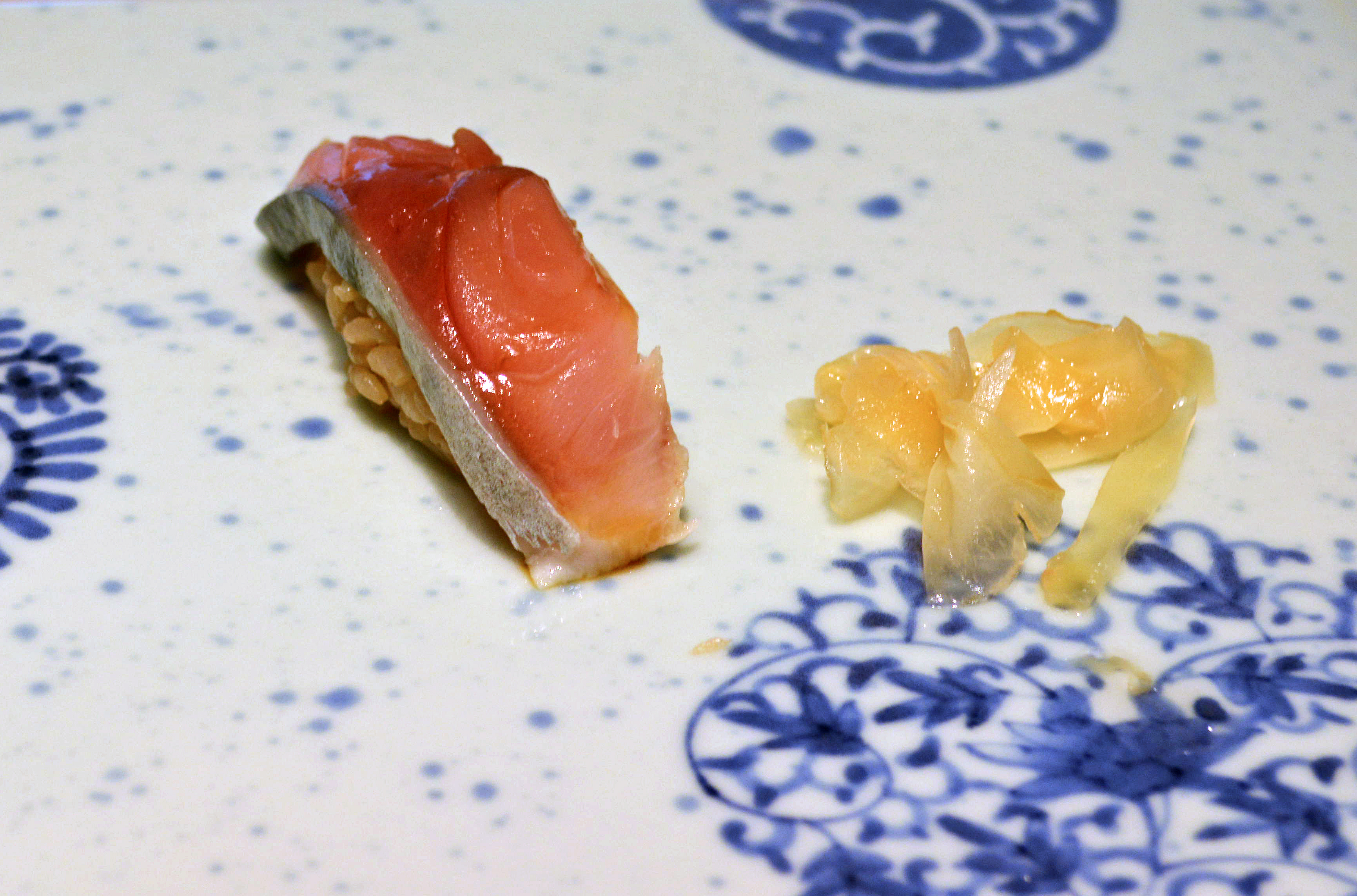Without a doubt the worst-named restaurant of the year is London's "Sexy Fish." But, the name — the audacity and stupidity of it — did set me thinking about fish seafood and sexiness (as opposed to fish and sex). Can a fish be sexy? Certainly not. When thinking about fish, "sexy" is one of those words that should be jettisoned into space. A better question: Can a fish be sublime? Most definitely. Especially when it comes in its purest, least adulterated form: sushi.
Take the saba (mackerel). There's nothing delicate or meek about this fishy tasting fish. And at Kurosugi, a sushi restaurant in Kitashinchi, the chef didn't try to hide or dispute this fact, which may explain why I never tasted any wasabi. I suspect that the mackerel had, at other times in its life, other purposes, but at that moment — as it waited on the hand-painted tile accompanied only by pickled ginger — I wanted to believe its (higher) purpose was to have a diner bear witness to the extent of its intense flavors. Sublime? Check
Then there was the oyster, and while I'm aware of its alleged sexiness, I believe it's more a case of its physical resemblance than anything else. It arrived midway through lunch and it was little, but lovely — even to look at. The sushi chef had folded the mantle in on itself, covering the delicate organs, to make the creature look as if it were floating along on a pillow of rice. It was glazed in the light soy sauce that is painted on nearly every sushi serving, which gave it a uniform light brown aura. The result? It's about the closest thing you'll get to the experience of eating velvet.


















With your current subscription plan you can comment on stories. However, before writing your first comment, please create a display name in the Profile section of your subscriber account page.